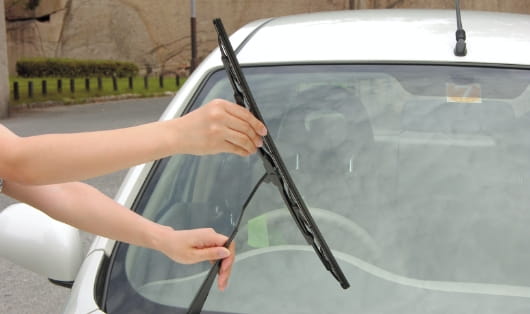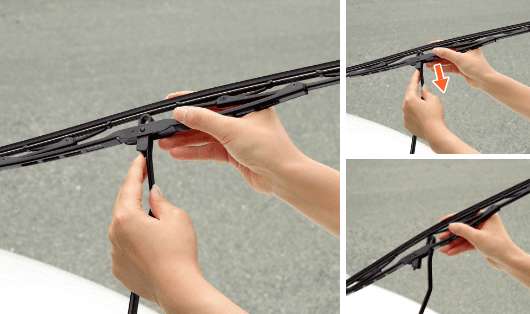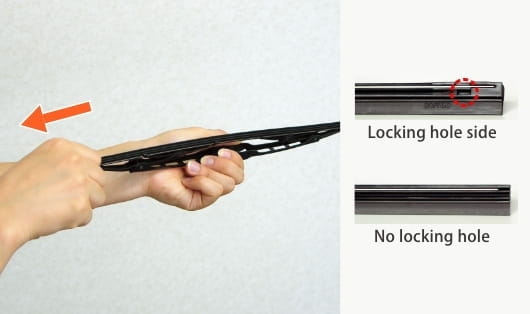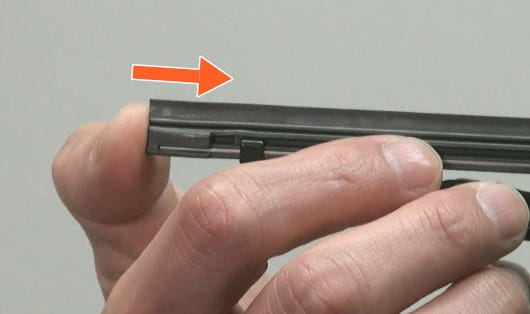Replacement Wiper Blades Rubbers
Replacing wiper blades rubbers is a crucial aspect of vehicle maintenance that often goes overlooked.

Wiper blade rubbers are the essential components responsible for ensuring a clear and unobstructed view while driving in adverse weather conditions.
Topex guide, we will explore the importance of choosing high-quality wiper blade rubbers, when and how to replace them, and tips for optimal performance.
What is Wiper Blade Rubbers ?
Wiper blade rubber is the insert on the wiper blade that makes contact with the windscreen. As the windscreen wiper moves, the rubber pushes the rain, dirt, snow etc., out of the way, making the visibility clearer.
Why Quality Wiper Blade Rubbers Matter
Wiper blade rubbers play a vital role in your vehicle’s safety. Their quality directly impacts the efficiency of your wiper blades in clearing rain, snow, and debris from your windshield. Inferior rubbers can wear out quickly and deteriorate, leading to reduced visibility and compromising your safety on the road. Here’s why quality wiper blade rubbers matter:
Durability: High-quality wiper blade rubbers are often made from a blend of rubber and silicone, providing durability and resistance to aging. They outlast cheaper alternatives and ensure consistent performance.
Optimal Cleaning: Quality rubbers are designed to conform to your windshield’s curvature, ensuring even and effective cleaning. This results in a clear view of the road, enhancing your safety.
Resistance to Harsh Weather: Quality rubbers can withstand extreme weather conditions, including intense heat and freezing cold. This resilience ensures that your wiper blades function well throughout the year.
When Should you Replace your Wiper Blade Rubber?
If your windscreen wipers have begun to creak, go at a slower pace, or just aren’t as efficient at wiping debris away as they once were, it may be a sign that the rubber needs replacing to allow them to run more smoothly. Your windscreen wiper blade rubbers will typically need changing every 6–12 months, so you should check these regularly for signs of wear.
If the damage is more severe, you may need replacement wiper blades and rubber.
When to Replace Wiper Blade Rubbers
Regular inspection and replacement of wiper blade rubbers are essential for maintaining a safe driving experience. Here are signs that indicate it’s time to replace your wiper blade rubbers:
Streaking: If your wiper blades leave streaks or smudges on the windshield, it’s a clear sign that the rubber is worn out and needs replacement.
Chattering: Wiper blades that produce a chattering or skipping sound as they move across the windshield may have damaged rubbers that need immediate attention.
Cracking or Splitting: Visible cracks or splits in the rubber indicate severe wear and necessitate replacement to prevent further damage to the windshield.
Reduced Visibility: When your wiper blades are no longer effectively clearing the windshield, causing reduced visibility in rainy or snowy conditions, it’s time to replace the rubbers.
Choosing the Right Wiper Blade Rubbers
Selecting the right wiper blade rubbers is crucial to ensure optimal performance and safety. Here’s how to make the right choice:
Check Your Vehicle Manual: Refer to your vehicle’s manual or consult the manufacturer’s recommendations to determine the correct wiper blade rubber size for your specific make and model.
Quality Matters: Invest in high-quality rubbers made from a durable material like silicone-infused rubber, as they tend to last longer and provide superior performance.
Consider Climate: If you live in an area with extreme weather conditions, look for rubbers that are designed to withstand these challenges, ensuring consistent performance year-round.

How to Replace Wiper Blade Rubbers
Replacing wiper blade rubbers is a relatively simple process that you can do yourself. Here’s a step-by-step guide:
Lift the Wiper Arm: Gently lift the wiper arm away from the windshield until it stays in an upright position.
Remove the Old Rubber: Most wiper blades have a tab or latch that holds the rubber in place. Release the tab and carefully slide the old rubber out of the wiper blade assembly.
Insert the New Rubber: Slide the new wiper blade rubber into the wiper blade assembly, making sure it’s securely in place.
Lower the Wiper Arm: Carefully lower the wiper arm back to its original position on the windshield.
Test the Wipers: Turn on your wipers and ensure they move smoothly and clear the windshield effectively.
Replacing the Entire Wiper Blade vs. Just the Rubbers
You have the option to replace the entire wiper blade assembly or just the rubbers. Here are some considerations for both:
Replacing the Entire Wiper Blade: This is a more straightforward option and is often recommended if the wiper blade assembly is old or damaged. New wiper blades typically come with new rubbers, ensuring optimal performance.
Replacing Only the Rubbers: If the wiper blade assembly is in good condition, replacing only the rubbers can be a cost-effective choice. Ensure that you choose compatible replacement rubbers for your existing wiper blades.

Proper Installation Matters
Whether you’re replacing the entire wiper blade assembly or just the rubbers, it’s crucial to ensure proper installation. Follow these tips:
Alignment: Align the wiper blade or rubber properly with the windshield to ensure even contact and optimal cleaning.
Secure Fit: Make sure the wiper blade or rubber is securely attached to the wiper arm to prevent it from coming loose during operation.
Testing: Test the wipers to ensure they move smoothly and clear the windshield effectively without leaving streaks or smudges.

Conclusion
In conclusion, replacing wiper blade rubbers is a simple yet essential maintenance task that significantly contributes to your safety while driving.
https://www.topexwiper.com/wiper-blade-refill/

Choosing high-quality rubbers, replacing them at the right time, and ensuring proper installation will enhance visibility and keep you safe in various weather conditions. Don’t overlook the condition of your wiper blade rubbers, and remember that a clear view of the road is crucial for a safe and comfortable driving experience.


